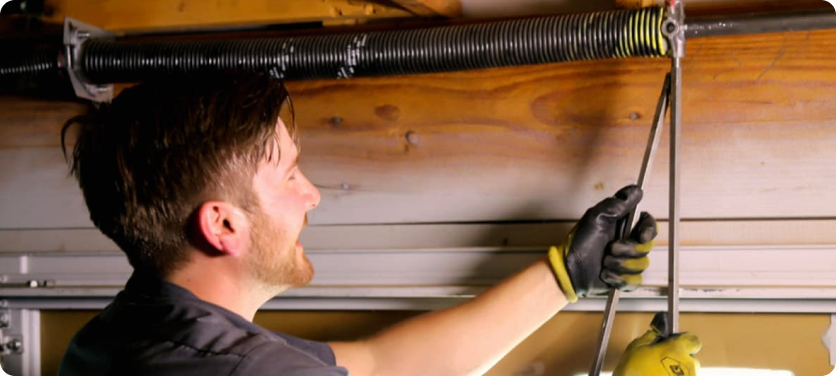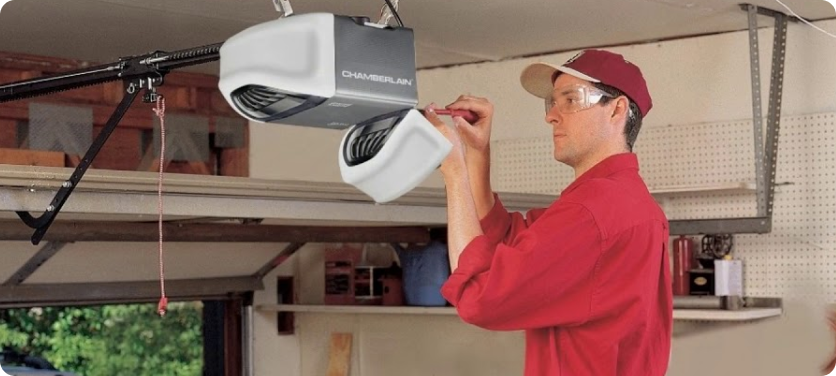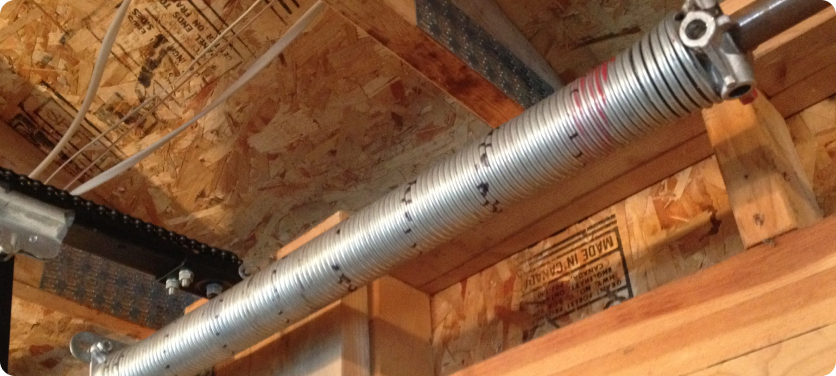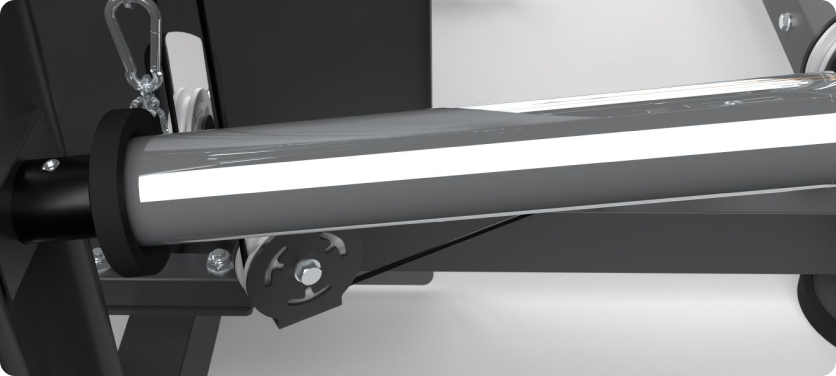The garage door spring system is an important part of your home’s security. It is important to do the correct work of the spring to keep the door running smoothly. A broken spring increases the risk of an accident. Therefore, it is very important to get replacement done on time.
Common Sign of a Damaged Garage Door Spring
Timely replacement of garage door springs is a must for safety. Spring malfunction increases the risk of an accident. A broken spring disturbs the balance of the door.

- Visual Inspection Markers: Cracks or wear and tear are clearly visible in the garage door spring. Rusting around the spring affects its functionality. The weak spring causes the door to lean to one side unbalanced. Gaps or deformities indicate spring malfunction.
- Performance Indicators: There is an unusual sound in opening and closing the door. The door moves slowly or at an irregular speed when the button is pressed. The weight of the door feels unbalanced. The motor has to work harder to lift the door.
- Sound Signal: A loud metallic sound comes from a broken spring. A creaking sound is heard while driving the door. The motor starts making an abnormal sound. The shaking of the door makes a rattling sound.
- Movement Pattern: The door appears tilted to one side. The door gets stuck while opening and closing. The speed of the door is uneven. The door does not fully engage when closed.
Garage Door Spring Systems Explained
The spring system does the important job of balancing the weight of the door. Torsion and extension are two types of spring used. The capacity of the spring depends on the size and weight of the door.

- Mechanical Principals: The spring serves to balance the weight of the door. Torsion and extension springs work differently. The capacity of the spring depends on the weight of the door. The spring system helps to move the door up and down safely.
- Design Difference: The torsion spring is mounted horizontally above the door. The extension spring is mounted vertically to the side. Both types of springs control tension in different ways. The spring is selected according to the size and weight of the door.
- Installation Location: The torsion spring is mounted above the door header. The extension spring is fitted along the track. The position of the spring affects its functionality. A spring in the right place lasts for a long time.
- Lifespan Expectation: Good quality spring lasts for about 10,000 cycles. Regular maintenance can extend the life of the spring. Bad weather can reduce the life of spring. The life of the spring also depends on the use of the door.
DIY vs Professional Spring Replacement
Spring replacement can be dangerous without professional help. Professional technicians have specialized tools and experience. It is better to get the work done by a professional in terms of safety.
-
Risk Assessment
Spring replacement can be risky. Working incorrectly can lead to injury. Professional technicians work safely. It’s important to understand the risks of DIY.
-
Necessary Tools
Special types of tools are needed. Working without the right tools can be dangerous. Professionals have all the necessary tools. It is necessary to use the tools correctly.
-
Technical Expertise
Technical knowledge is necessary to change the spring. Professional technicians have enough experience. It’s important to use the right technique. Doing things incorrectly can cause harm.
-
Cost Analysis
DIY costs less materials. Professional service comes with a guarantee. Professional service is beneficial in the long run. Consider all aspects to make the right decision.
Key Safety Protocols for Spring Replacement
It is very important to use safety equipment. The workplace should be kept clean and safe. It is important to be prepared for an emergency.

- Personal Protective Equipment: It is important to wear safety glasses and gloves. Work should be done by wearing strong shoes. Check safety equipment regularly. Use a well-fitting safety device.
- Workspace Preparation: Keep the workplace clean and organized. Arrange adequate lighting. Do not keep dangerous objects around the workplace. Maintain a safe working environment.
- Tool Requirements: Keep all the necessary tools ready in advance. Ensure good condition of tools. Select the right tools. Keep tools in a safe place.
- Emergency Procedure: Keep the emergency contact number nearby. Keep a first aid kit available. Follow safety protocols. Be prepared for any emergency.
Spring Replacement Guide
Carefully removing the old spring is the first step. It is important to fit the new spring correctly. Check tension and balance after installation.

- Preparation Phase: Gather all the necessary tools and materials. Prepare the workplace. Wear safety equipment. Inspect the old spring.
- Removal Process: Remove the old spring carefully. Keep all parts organized. Reduce tension gradually. Follow the safety instructions.
- Installation Technique: Place the new spring correctly. Increase the tension gradually. Check all connections. Tighten the fitting firmly.
- Limit Use: Lraesent fringilla erat purus, ut semper nisl tincidunt pretium.
- Adjustment Procedure: Correct the tension of the spring. Check the balance. Check the door movement. Finalize all adjustments.
Frequently Asked Questions
Regular lubrication and maintenance can make the spring last longer. Seasonal checks and correct care are important.
Yes, spring metal can be weak in the cold.
Overuse, weather effects, and poor maintenance can damage the spring.
No, a broken spring cannot be repaired. Replacing it is a better option for safety.


